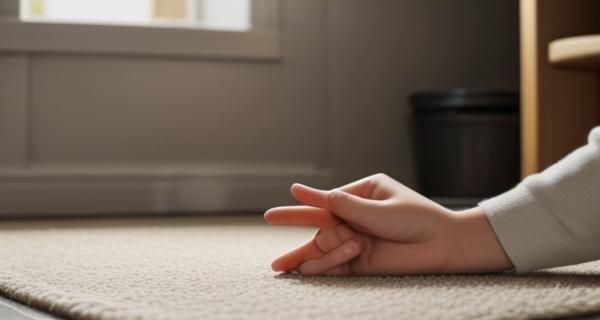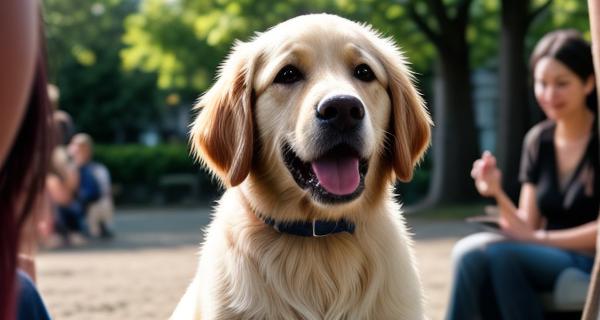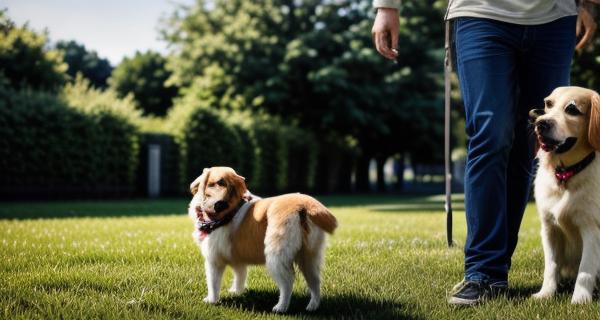Teaching Your Dog Not to Jump on Visitors
Managing Dog Jumping Behavior
## Managing Dog Jumping Behavior
Is your dog a whirlwind of excited leaps when guests arrive? You’re not alone! Dog jumping is a common, but often unwanted, behavior. It stems from excitement and a desire for attention, but it can be disruptive and even potentially harmful for visitors. The good news? It’s absolutely trainable!
The key to stopping jumping is consistency and positive reinforcement. Avoid any attention – even a scolding – when your dog jumps. This unintentionally reinforces the behavior. Instead, turn your back and ignore them until all four paws are on the ground. Then, offer praise and a treat.
Start practicing in low-distraction environments and gradually introduce more stimulating situations. “Watch me” is a fantastic command to teach. Hold a treat near your face, say “Watch me,” and reward when your dog makes eye contact. This redirects their attention and teaches impulse control.
Another helpful technique is management. Keep your dog on a leash when guests are present, especially during initial training phases. Provide them with a designated “place” – a bed or mat – and reward them for staying there while guests enter.
Remember, patience is crucial. It takes time and repetition for your dog to learn new behaviors. Celebrate small victories and stay positive! If you’re struggling, consult a certified professional dog trainer for personalized guidance. A happy, well-behaved dog makes for a happy home for everyone.
Visitor Interaction Training
## Visitor Interaction Training
Jumping on visitors is a common, but often unwanted, dog behavior. It can be overwhelming for guests, potentially causing injury or stress for both the dog and the visitor. The good news is, with consistent training, you can teach your dog a more polite greeting!
Start by managing the situation. Before guests arrive, put your dog on a leash or in a designated safe space like a crate with a favorite toy. This prevents the jumping behavior from happening in the first place.
When the doorbell rings, have your dog remain in their safe space. Ask your visitor to ignore the dog until they are calm. Once your dog is calm (even for a few seconds!), have the visitor approach and reward your dog with a treat for remaining in place.
Gradually increase the duration your dog stays calm while the visitor is present. Practice with friends and family, slowly introducing more exciting scenarios.
Positive reinforcement is key! Reward calm behavior with treats, praise, and affection. Avoid scolding or punishing your dog for jumping, as this can create anxiety and worsen the problem.
Consistency is crucial. Every time guests arrive, reinforce the desired behavior. This training takes time and patience, but the reward of a well-behaved, friendly dog is well worth the effort. If you’re struggling, consider consulting a certified professional dog trainer for personalized guidance.
Positive Reinforcement Techniques
Teaching your dog not to jump on visitors is a common goal, and thankfully, it’s achievable with patience and positive reinforcement! Jumping can be a frustrating habit, but by focusing on rewarding desired behaviors, you can significantly reduce or eliminate it.
The key is to redirect your dog’s attention *before* they jump. As you approach the door, have them sit or lie down. The moment their paws touch the visitor, immediately reward them with a high-value treat and praise (“Good sit!”, “Yes!”). Consistency is crucial – every single time they offer a polite greeting, they get rewarded.
Avoid any form of punishment, as this can create fear and anxiety, potentially making the problem worse. Yelling or pushing them back is counterproductive.
Gradually increase the difficulty. Start with brief visits from one person, then progress to longer visits with multiple people. The visitor should *ignore* the dog if they do jump, turning away and not making eye contact. This removes the attention the dog is seeking.
You can also teach an alternative behavior. Train your dog to go to a designated “place” (a bed or mat) when someone comes to the door. Reward them for staying there calmly.
Remember, positive reinforcement takes time. Be patient, stay consistent, and celebrate small victories! A well-behaved dog makes for a much more enjoyable greeting experience for everyone.
Preventing Unwanted Dog Behaviors
Teaching Your Dog Not to Jump on Visitors
Preventing Unwanted Dog Behaviors
Is your dog a furry, four-legged jump enthusiast? While enthusiastic greetings are endearing, jumping on visitors can be a nuisance and even pose a risk, especially for elderly or small children. Fortunately, with patience and consistent training, you can curb this behavior and create a more pleasant experience for everyone.
The key is to manage the situation proactively. Prevent jumping by keeping your dog on a leash when guests arrive, especially initially. Ask visitors to ignore your dog until they settle down – no eye contact, talking, or petting. This removes the reward of attention.
When your dog starts to approach calmly, offer praise and a treat. Teach an alternative behavior, like “sit” or “go to your place,” and reward that instead of jumping. Practice these commands regularly in low-distraction environments, gradually increasing the difficulty as your dog improves.
Consistency is crucial. Every time your dog jumps, gently redirect them and enforce the chosen alternative behavior. Avoid scolding, as this can create anxiety.
Consider a management tool like a comfortable dog bed or crate as a designated “safe space” where your dog can retreat when visitors arrive.
If the jumping is persistent or causing significant challenges, consult a certified professional dog trainer or veterinary behaviorist. They can provide personalized guidance and address any underlying behavioral issues. A calm, controlled approach will yield the best results, fostering a welcoming environment for both your guests and your beloved companion.





Post Comment
You must be logged in to post a comment.